-
Piero della Francesca 1416-1492
Piero della Francesca, virtually forgotten for centuries after his death, but regarded since his rediscovery in the early 20th century as one of the supreme artists of the quattrocento. - He was a slow and thoughtful worker and often applied wet cloths to the plaster at night so that — contrary to normal fresco practice — he could work for more than one day on the same section.
Much of Piero's later career was spent working at the humanist court of Federico da Montefeltro at Urbino. There he painted the portraits of Federico and his wife (Uffizi, Florence, c. 1465) and the celebrated Flagellation (still at Urbino, in the Ducal Palace). Among them the Flagellation panel is his most enigmatic work, and it has called forth varied interpretations. From Web Gallery of Art
Piero della Francesca, Capella Maggiore, Basilica San Francesco, Arezzo 1452-66
In the Basilica of St. Francis at Arezzo Piero della Francesca filled the Cappella Maggiore with a cycle of idiosyncratic frescoes (1452-66) of an equally unusual “Legend of the Discovery of the True Cross” and two large frescoes of the Death of Adam.They are his major works.
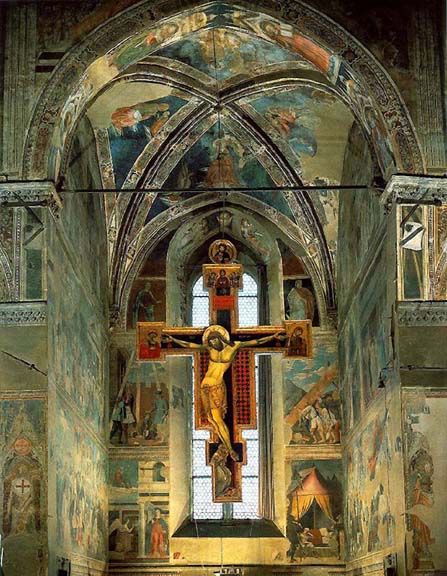
The Capella Maggiore
The Discovery of the True Cross 1460
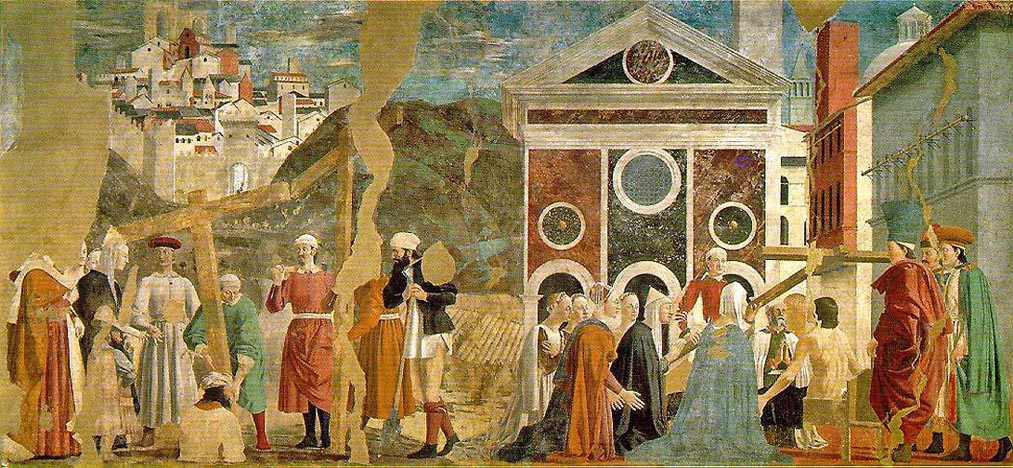
The Discovery of the True Cross
The Death of Adam 1460

The Death of Adam

Two of Adam's Descendants
The Meeting of Solomon and the Queen of Sheba 1452

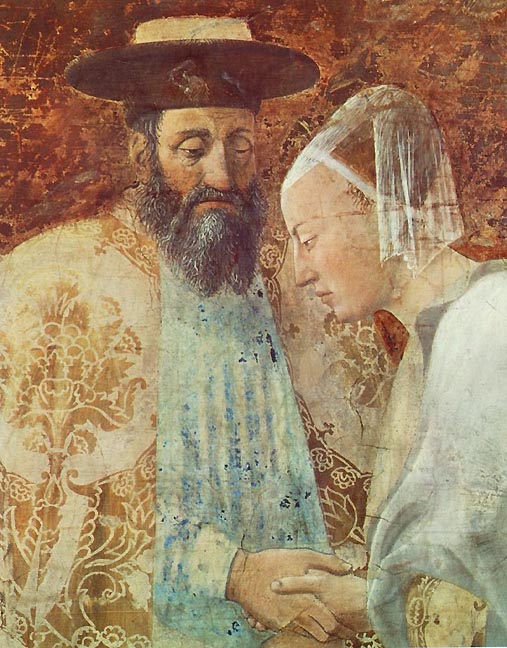
Solomon and the Queen
Mythic Battle Scenes 1458 - 1460

Battle between Constantine and Maxentius, c. 1458

Battle between Heraclius and Chosroes, c. 1460
Piero della Francesca, The Resurrection, Museo Civico, Sansepolcro 1458
Piero della Francesca's enigmatic but powerful Resurrection. The fresco has been detached and is now in the Museo Civico in Sansepolcro
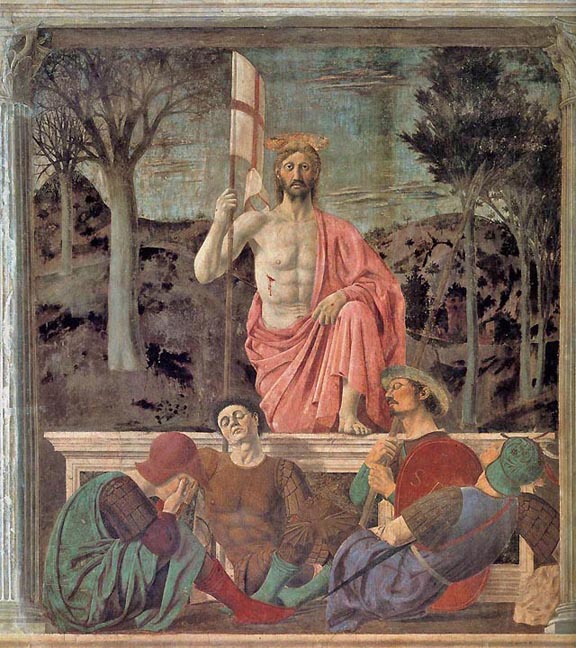
Many consider this fresco the most extraordinary painting of all times.
Aldous Huxley, for instance, says: "One of Piero's greatest masterpieces, painted probably just before his journey to Rome in 1458. This exemplifies Piero's ability to use archaic iconographic elements, belonging to the repertory of popular sacred images, yet placing them in an entirely new cultural and stylistic context."
Within a framework, formed at the sides by two fake marble columns, the composition is divided into two separate perspective zones. The lower area, where the artist has placed the sleeping guards, has a very low vanishing point. Alberti, in his theoretical writings, suggests that the vanishing point should be at the same level as the figures' eyes. By placing it on a lower level, Piero foreshortens his figures, thus making them more imposing in their monumental solidity. Above the figures of the sleeping sentries, Piero has placed the watchful Christ, no longer seen from below, but perfectly frontally. The resurrected Christ, portrayed with solid peasant features, is nonetheless a perfect representative of Piero's human ideal: concrete, restrained, and hieratic. The splendid landscape also belongs to the repertory of popular sacred images: Piero has symbolically depicted it as half still immersed in the barenness of winter, and half already brought back to life - resurrected - by springtime. Web Gallery of Art
Piero della Francesca's Madonna del Parto, Monterchi, 1460The "Madonna del Parto" (i.e. pregnant!) by Piero della Francesca (1460) was painted for the Monterchi cemetery chapel and is now housed in a new Museo della Madonna del Parto in in the village of Monterchi
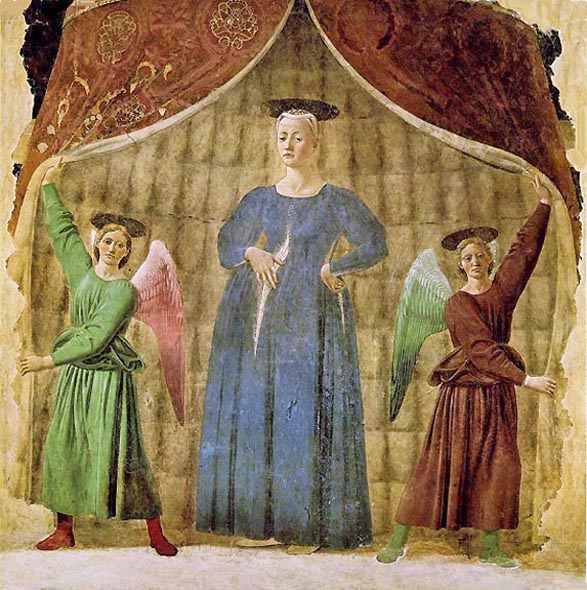
The unique and strange Madonna del Parto